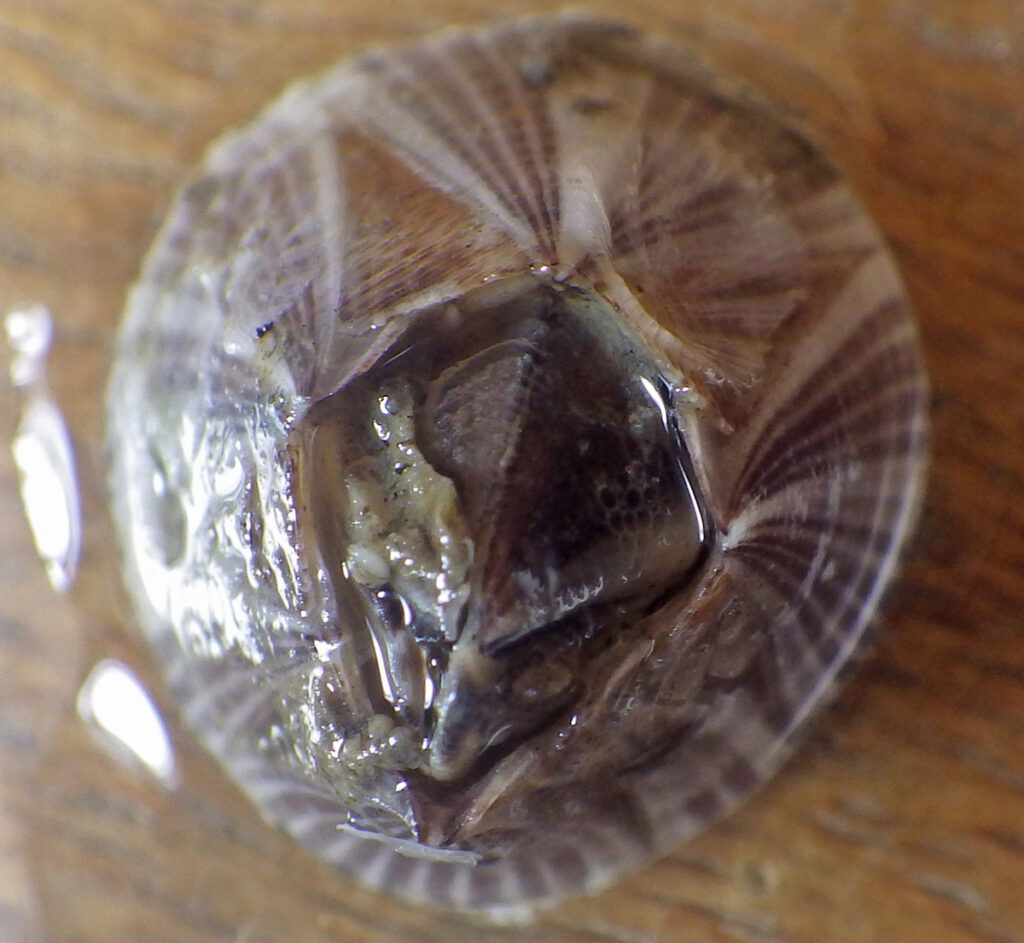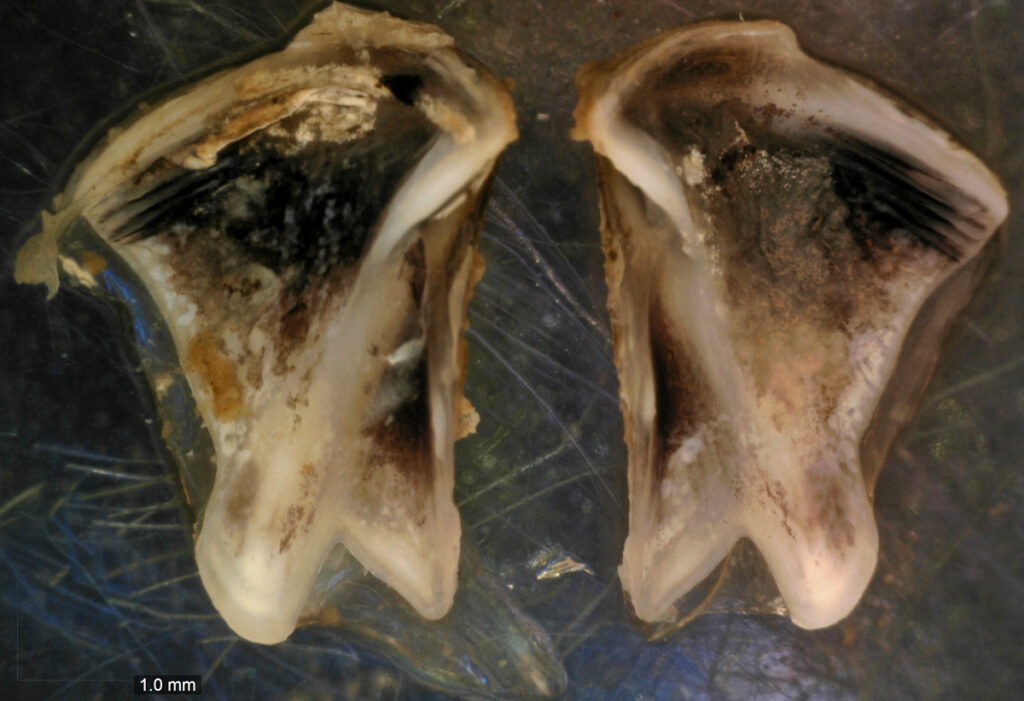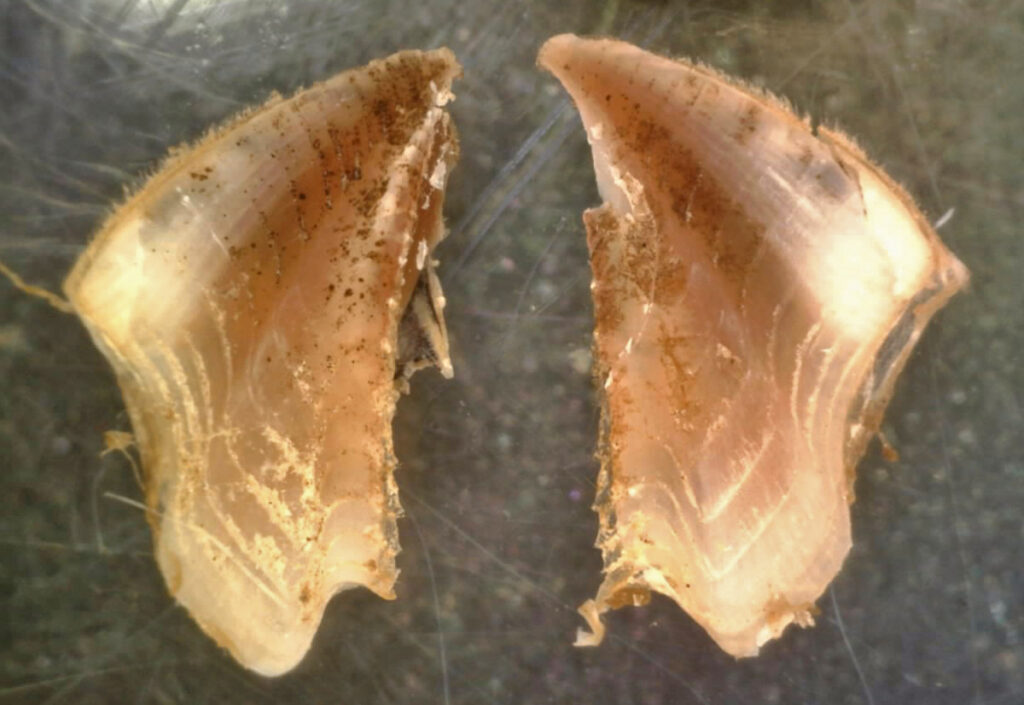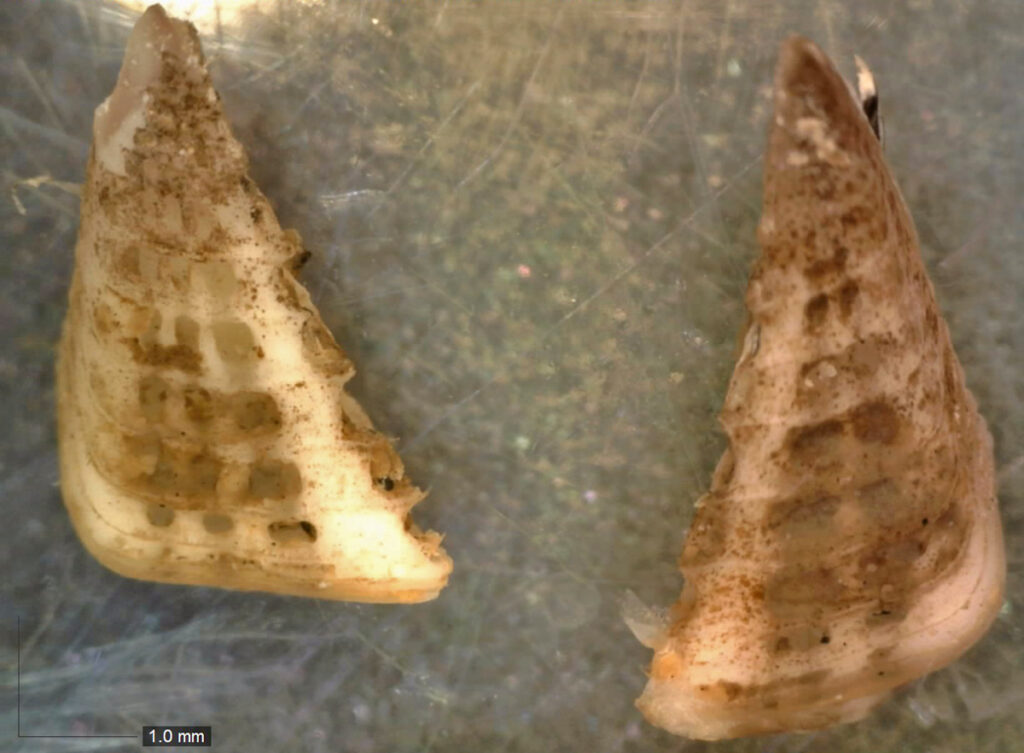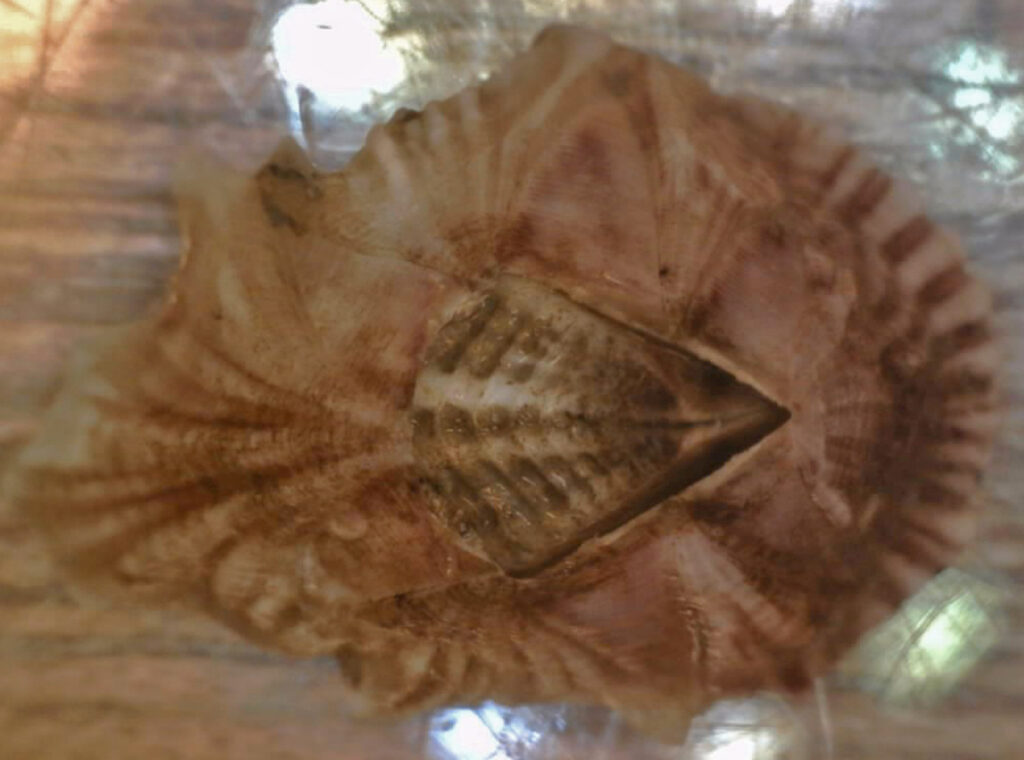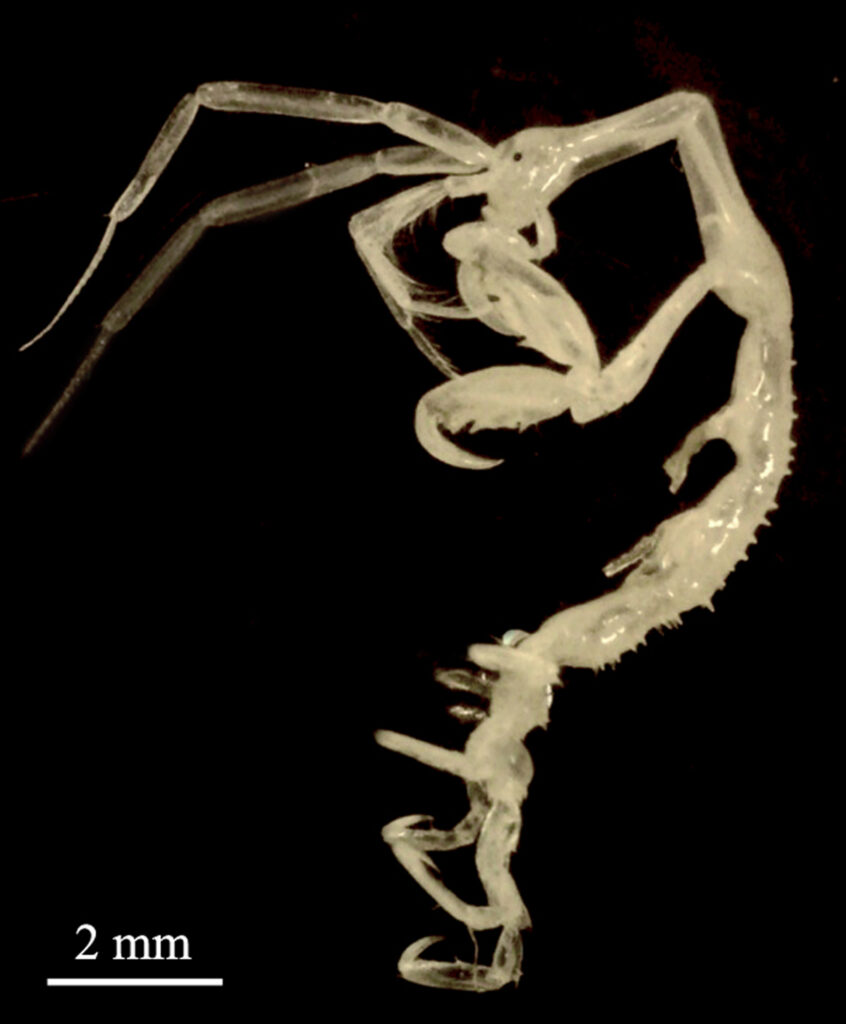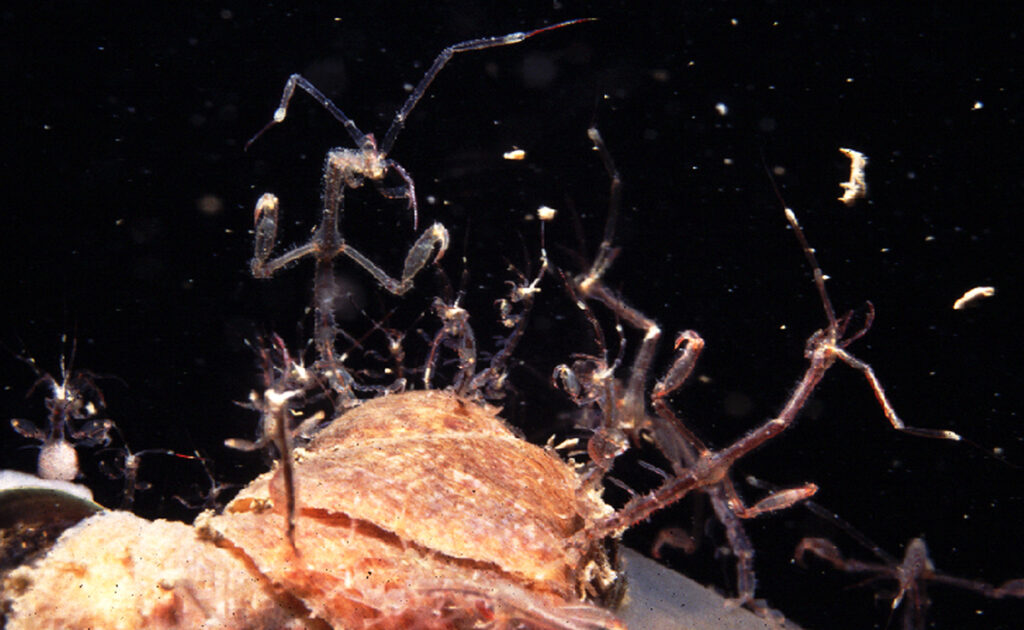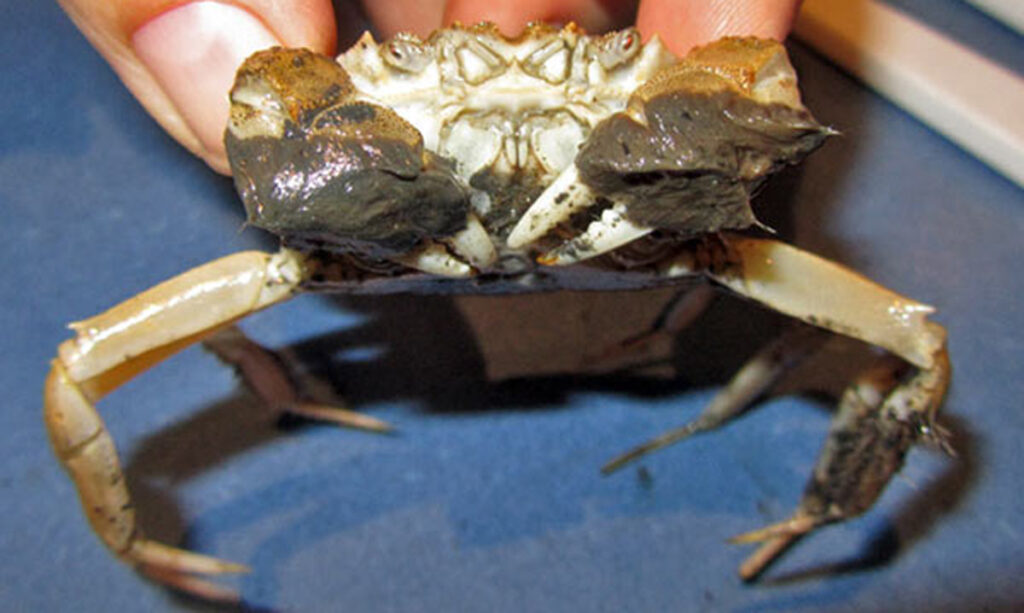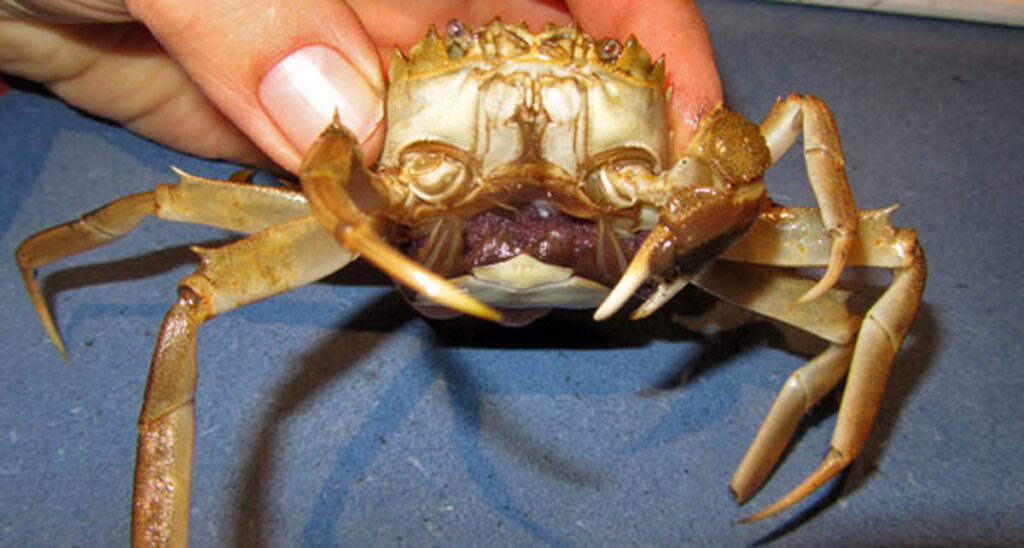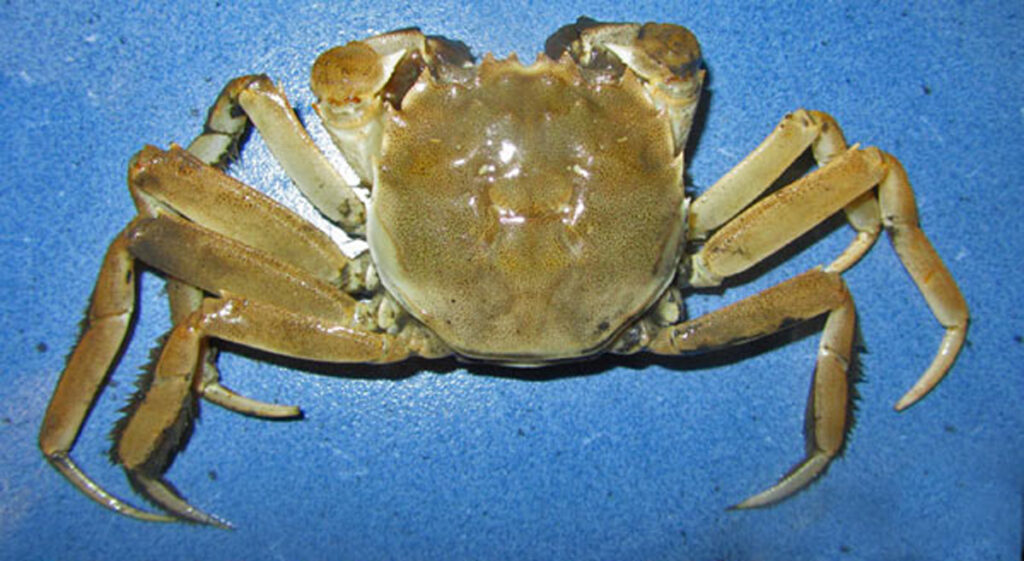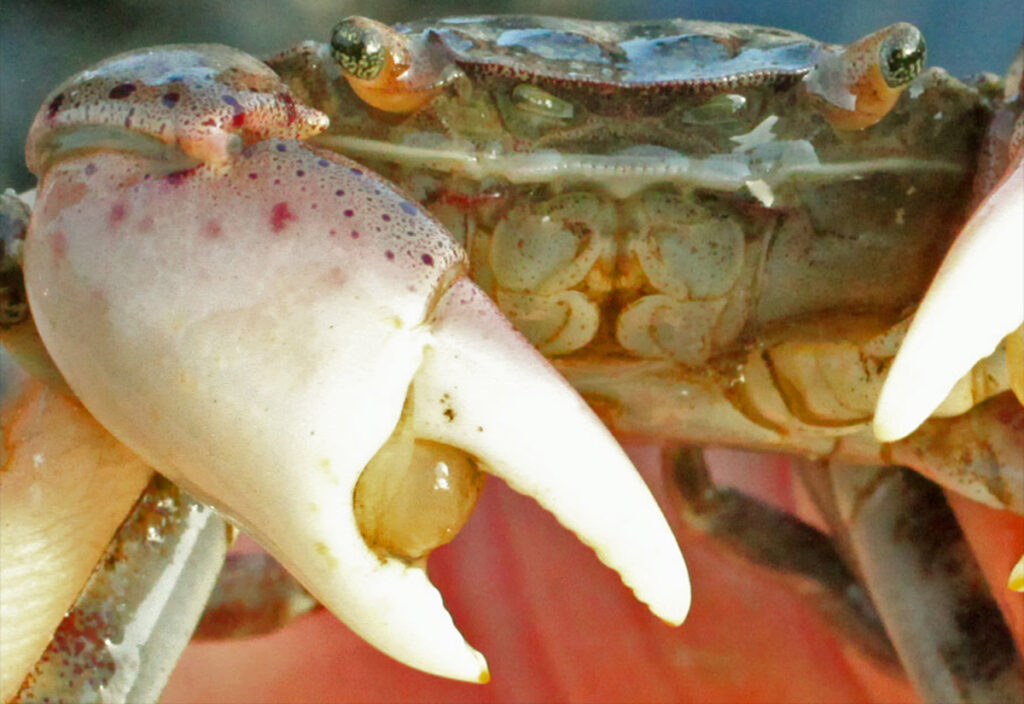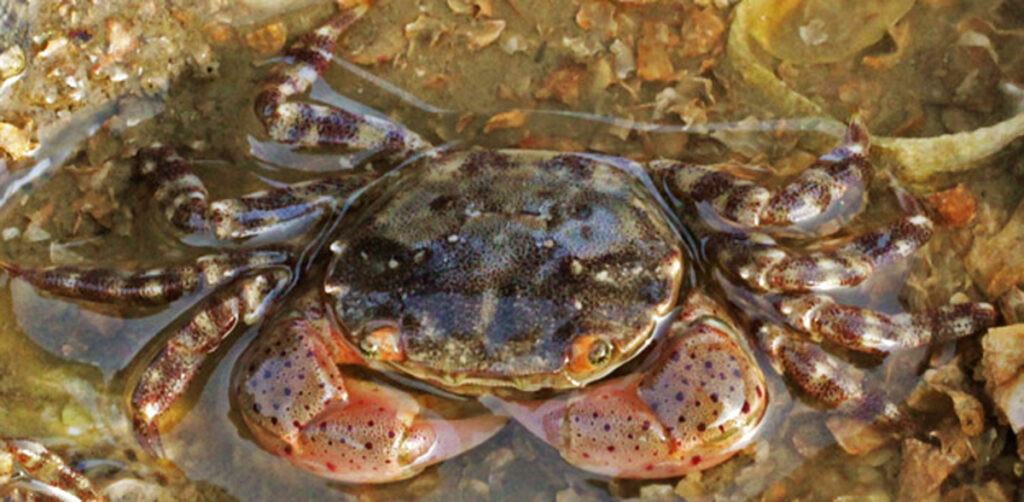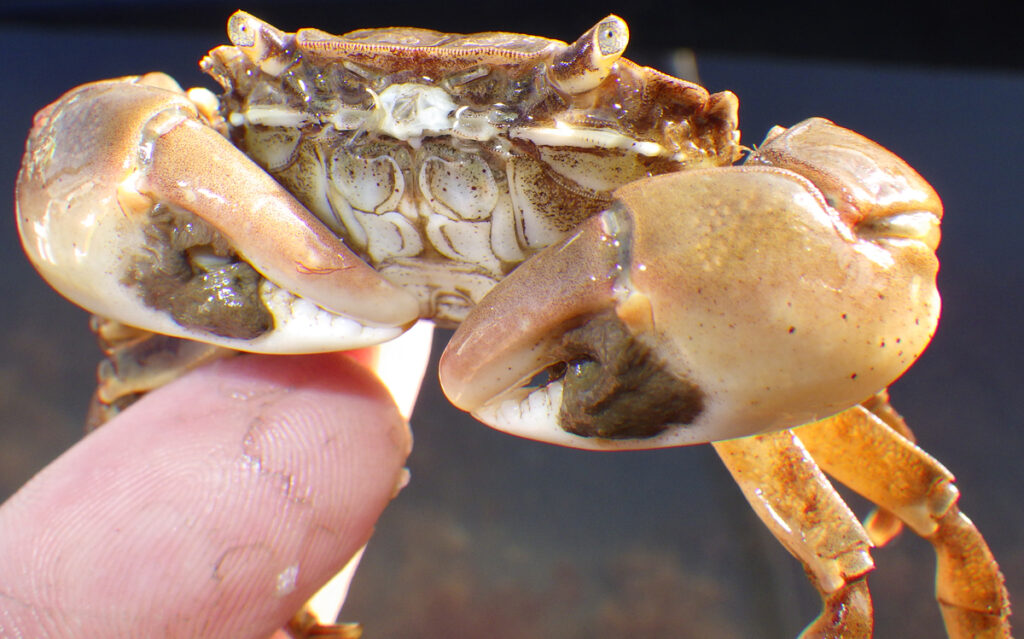Eriocheir sinensis
Also known as: Chinese mitten crab
What does it look like?
Large juveniles and adults of the Chinese mitten crab have a dense mat of hair on their white-tipped claws. The brownish coloured crabs can have a carapace width of up to 8 cm.
Distinguishing features
The Chinese mitten crab has a carapace with four spines between the eyes. Older individuals have hairs all over their claes. Based on these two features it can be distinguished from all other crab species that are known to have established populations in western Europe. The pattern of dots and ridges on the back of the carapace and just underneath the eyes, can also be used as distinguishing features if (juvenile) crabs have not yet developed hairs on the claws.
Confusion with similar species
The only other crab species in north-western Europe that has hair on its claws, but not over the rest of its body is the Asian brush-clawed shore crab Hemigrapsus takanoi, but this species does not have any spines on the carapace between the eyes. In addition, H. takanoi specimens do not commonly have a carapace width of more than 2 cm.
What is its origin?
Northwest Pacific
Habitat
The Chinese mitten crab can be found throughout the year in freshwater, where it may live in between rocks or in tunnels that it creates in riverbanks and shorelines. For its reproduction it needs to return to the sea, where it is only found seasonally, usually during late summer, in estuaries.
Presence in Ireland
Present on the island of Ireland (Waterford Harbour). There have been reports in the Irish Sea along the British Coast.
Behaviour and Spread
In late summer males and females move from rivers and lakes downstream to tidal estuaries where they will attain sexual maturity. Depending on their size the females will produce between 250,000 and 1 million eggs, which they will carry with them until they hatch in spring, in brackish waters. Larval development then takes place in estuaries after which the juveniles gradually move upstream into freshwater habitats.
Potential nuisance for aquaculture
Chinese mitten crabs live in fresh water for most of their lifecycle. During reproduction in late summer, when they are found in estuaries, these voracious omnivores may feed on mussels. Fishers that use cages and nets can be impacted as the crabs are strong, potentially damaging the fishing gear if they are caught. Fishers removing them from nets must be careful as these crabs seem to be much more aggressive than most of the native crab species.
Key Management Actions
When transporting mussels from an area where Chinese mitten crabs have been recorded, take the breeding season of the crabs into account. For most of the year they will be in freshwater and during that period, it is unlikely that any crabs will be present among marine shellfish. Chinese mitten crabs can easily be caught in crab cages, and it is therefore possible to monitor for their presence in the estuaries (close to the river) during the breeding season which may vary between regions.

